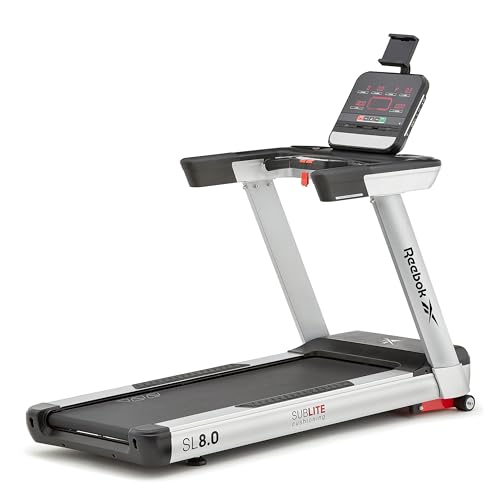What Do You Know About Walking Machine?

Discovering the Manual Incline Treadmill: A Comprehensive Guide
As the fitness market continuously progresses, with brand-new devices and devices striking the market, one piece of equipment has remained a staple in numerous homes and gyms: the treadmill. Specifically, the manual incline treadmill uses an unique method to cardiovascular fitness training. This guide looks into the functions, benefits, and considerations of utilizing a manual incline treadmill.
What is a Manual Incline Treadmill?
A manual incline treadmill is a non-motorized treadmill that requires users to power their movement by walking or working on the belt. Unlike standard treadmills, which count on electrical power to move the belt, manual incline treadmills depend entirely on the user's energy. The incline setting, which can be changed, assists mimic uphill running, offering a reliable workout.
Key Features of Manual Incline Treadmills
| Feature | Description |
|---|---|
| Manual Operation | Users need to propel the belt themselves, making it a self-paced workout. |
| Adjustable Incline | Incline settings can be adjusted, providing differed resistance for a tougher challenge. |
| Compact Design | Frequently more light-weight and compact than motorized treadmills, making them simpler to save. |
| Durable Construction | Generally developed with tough products, designed to hold up against strenuous use. |
| Digital Display | Some models might feature a fundamental digital display to show time, distance, and calories burned. |
Benefits of Using a Manual Incline Treadmill
1. Boosted Cardiovascular Fitness
The manual incline treadmill successfully elevates heart rate, leading to enhanced cardiovascular health. The incline setting requires more effort from the muscles, consequently increasing the overall exercise intensity.
2. Personalized Workouts
With manual treadmills, users have full control over their speed and incline. This function permits them to tailor exercises to line up with fitness goals, whether focusing on endurance building or interval training.
3. Lower Operating Costs
Manual incline treadmills do not require electricity, making them an economical alternative to traditional treadmills. Manual Walking Pad wanting to improve their home fitness center without incurring high energy expenses.
4. Engaging Full-Body Workout
Running or walking on an incline engages numerous muscle groups, including the legs, glutes, and core. This total-body activation assists tone and strengthen the body while burning additional calories.
5. Reduced Risk of Injury
The low-impact nature of a manual incline treadmill can be less taxing on the joints compared to high-impact aerobic exercises. Nevertheless, users must still practice great type and begin slowly to decrease the threat of pressures or injuries.
Considerations When Using a Manual Incline Treadmill
Safety First
While manual incline treadmills have many advantages, there are some security considerations to bear in mind:
- Falling Hazard: Since users move the belt themselves, it's crucial to maintain a consistent speed to prevent losing balance.
- Incline Levels: Adjusting the incline during usage can be tough and needs careful attention to maintain stability.
Appropriate Form and Technique
To maximize the benefits while reducing the risk of injury, users should highlight proper running or walking type. This consists of keeping the back straight, shoulders relaxed, and arms in a natural position.
How to Choose the Right Manual Incline Treadmill
Selecting the very best manual incline treadmill is paramount to achieving fitness objectives. Below are key factors to consider:
| Criteria | Suggestions |
|---|---|
| Weight Capacity | Guarantee the treadmill can support your weight; the majority of have capabilities varying from 250 to 400 pounds. |
| Adjustability | Search for treadmills with several incline settings to offer exercise range. |
| Mobility | Consider foldable designs if storage space is restricted. |
| Comfort Features | Look for non-slip surfaces and cushioned running locations to improve convenience. |
Regularly Asked Questions (FAQ)
1. How do I preserve a manual incline treadmill?
To maintain a manual treadmill, routinely check the belt for wear and ensure it operates efficiently. Tidy the frame and running surface area, and inspect the bolts and screws for signs of loosening.
2. Is a manual incline treadmill suitable for novices?
Yes, manual incline treadmills can be ideal for beginners. Users can begin at a sluggish pace and slowly increase intensity. However, it's vital to comprehend one's fitness level and begin thoroughly.
3. Can I perform interval training on a manual incline treadmill?
Absolutely. The adjustable incline function permits users to produce varied workouts, ideal for interval training. Alternate in between walking and performing at various inclines to keep exercises engaging and challenging.
4. Is a manual incline treadmill quieter than a motorized one?
Yes, due to the lack of a motor, manual incline treadmills normally run more silently, making them an exceptional choice for shared spaces.
5. Just how much space do I need for a manual incline treadmill?
Manual incline treadmills normally inhabit less area than motorized models. However, users should ensure there's sufficient area for motion around the treadmill for security.
The manual incline treadmill offers a distinct mix of benefits and adaptability, making it an outstanding option for those looking to improve their exercise routine without counting on electrical power. From improved cardiovascular fitness to adjustable training options, it provides a comprehensive technique to physical fitness. By comprehending its features, advantages, and security considerations, users can choose the best model and include it successfully into their exercise routine. Whether used in a home health club or a bigger physical fitness center, a manual incline treadmill can be an invaluable tool for those concentrated on health and wellness.

